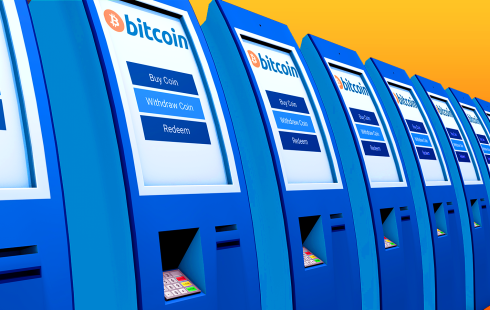What Is Web3?

Cryptocurrency is a digital asset that uses cryptography and encryption to secure and verify all of its transactions. It is decentralized in nature, meaning individuals control it instead of a financial institution like a bank.

Cryptocurrency — crypto for short — is digital currency that employs cryptography and encryption to secure and validate its transactions. Because they exist in a decentralized system, cryptocurrencies don’t have one central entity like a bank to verify transactions or issue new units. Instead, they rely on a peer-to-peer system, meaning anyone anywhere can send and receive payments securely.
The first cryptocurrency to come on the market was Bitcoin, which was launched in 2009 by a cryptographer working under the pseudonym of “Satoshi Nakamoto.” Today, there are thousands of cryptocurrencies out there, but Bitcoin remains the most popular.
Much of the early interest in crypto was to trade it for profit, like stocks. But now, crypto is an accepted form of payment in many major retailers, and even some countries. This technology has also begotten other blockchain-based digital assets and creations including non-fungible tokens, or NFTs, play-to-earn video games, and the entire decentralized finance system, which will continue to power the next emerging iteration of the internet — otherwise known as Web3.
Like any other currency, cryptocurrency can be used to buy everyday things, from food to cars. But unlike cash, cryptocurrency payments exist solely online as digital entries in a database describing specific transactions, otherwise known as a ledger. This is made possible by blockchain technology — a digital, decentralized ledger that is composed of encrypted blocks of data, which are “chained” together and secured (often by using complex math problems).
New units of cryptocurrency are created through a process called mining, which involves using computer power to solve complicated mathematical problems that generate coins.
People can also buy existing coins on specific trading platforms, or exchanges. Whether you mine it yourself or purchase it from others, when you own cryptocurrency, you don’t own anything tangible. Instead, you own a sort of key that allows you to transfer a record, or unit, from one person to another on the ledger, without a third-party entity, such as a bank.
Cryptocurrency is stored and spent using cryptographically secure digital wallets — also known as crypto wallets. When people want to transfer funds and make purchases, it is recorded in a database and secured using cryptography, creating an irrefutable record of the transaction and who the new owner of the crypto is.
Cryptocurrencies and the blockchains that support them are mostly built on open source technology, meaning anyone can view the code and build upon it for future projects. Because of this, cryptocurrency issuers say that using crypto makes transferring money and making purchases an easy, private, secure and relatively low-cost alternative to our traditional financial system.

Generally, there are four types of cryptocurrencies one should know about before they dive into this space: altcoins, privacy coins, stablecoins and tokens.
Altcoins are any cryptocurrency that isn’t Bitcoin — the original cryptocurrency. Namecoin is widely considered to be the first altcoin, and it prefaced the concept of Colored Coins, a crypto asset marked to represent real-world assets. These became the basis for NFTs. And now, thanks to the open-source nature of blockchain technology, altcoins (as well as their respective platforms) can be created by anyone with access to the internet.
Privacy coins are cryptocurrencies designed to protect the privacy of the user and their transactions even more than normal crypto already does. The blockchain records when these coins are withdrawn or deposited, similar to the way cash works at a bank. But how those coins are used after they’ve been withdrawn is kept entirely private.
Privacy coins are not accepted everywhere. Some cryptocurrency exchanges won’t allow the sale or trade of privacy coins on their platforms because they could potentially be used for nefarious purposes. And countries like South Korea, Japan and Australia have even banned them.
Meanwhile, stablecoins are any cryptocurrency designed to have a relatively stable price, typically through being tied, or “pegged,” to a commodity or currency, such as the U.S. dollar, the Japanese yen or the euro — otherwise known as fiat money. True to their name, stablecoins are intended to provide the stability and predictability ordinarily found in traditional assets within the otherwise volatile crypto market, thanks to their 1-to-1 match to either a hard currency, a commodity, or even another cryptocurrency.
Zooming in a little further, there are three specific kinds of stablecoins, organized by the mechanisms they use to stabilize their value. Algorithmic stablecoins use algorithms and smart contracts — computer programs that automatically execute an agreement between parties based on rules written into a blockchain — to manage the supply of coins issued. Crypto-backed stablecoins use other cryptocurrencies as collateral, as well as smart contracts to monitor the minting and burning, or creation and destruction, of the coin. And fiat-backed stablecoins use government-issued currency like the U.S. dollar as collateral.
Finally, tokens (or crypto tokens) are cryptocurrencies built on top of an existing blockchain — meaning, unlike cryptocurrencies, they are not native to a specific blockchain protocol. Tokens can be used for more than just making purchases or payments (they may have a certain utility), and there are thousands of tokens available today.
Again, there are thousands of cryptocurrencies out there today, with estimates ranging from 12,000 to 19,000. At the end of 2021, the market was reportedly adding about 1,000 new cryptocurrencies every month.
This exponential growth is largely due to the fact that there are virtually no barriers to entry when it comes to blockchain innovation. Anyone who wants to create a cryptocurrency can do it, even if they have little-to-no tech experience.
Of course, not all of these cryptocurrencies should be considered equal. Many new coins are created with the sole purpose of making money for their developers. So, only a small fraction of the crypto out there is worth learning about and buying. Here are some of the more well-known options out there (besides Bitcoin and Ethereum).
Binance Coin (BNB) is the cryptocurrency that powers Binance, one of the largest crypto exchanges in the world in terms of global daily trading volume. The token can be used for trading, payment processing and even booking travel arrangements. It can be exchanged for other forms of cryptocurrency like Ethereum or Bitcoin, too. Binance also offers a stablecoin called Binance USD (BUSD), which is pegged to the U.S. dollar.
Somewhat new to the crypto scene, Cardano is notable for its early embrace of proof-of-stake validation, which expedites transaction times and decreases the amount of energy needed to mint new coins. The open-source platform was launched by Charles Hoskinson, a co-founder of Ethereum, and it even works to enable smart contracts and decentralized applications. These are all powered by Cardano’s native coin, ADA, which is named after mathematician Ada Lovelace.
Dash is known for its accessibility. Its coin, DASH, can be purchased online or even at ATMs. And it can be used to buy items from thousands of brands easily, with no fees, as well as the ability to save up to 12 percent on purchases, according to the website. Dash hasn’t always had this reputation though. Back in 2014, when it was still known as Darkcoin, it gained some notoriety for being a popular currency of choice on the dark web — a layer of the internet in which users’ IP addresses are completely masked, allowing for total anonymity.
Polkadot (DOT) is an open-source project supported by the Web3 foundation. Created by Ethereum co-founder Gavin Wood in 2020, it was intended to “create the next version of Ethereum,” he said in a 2021 Protocol interview. Today, Polkadot is designed to allow different blockchains to exchange information and transactions with each other, while still maintaining a high level of security and allowing users full control. In 2022, Polkadot launched a beta version of a dashboard that simplifies the staking process, allowing users to lock away their crypto for a set amount of time to help support the operation of the blockchain — for which they could earn more crypto.
Tether (USDT) is widely considered to be the first successful stablecoin, and has been described as the “lifeblood of the crypto ecosystem.” While it was originally pegged to the U.S. dollar only, Tether has since expanded to support multinational currencies, including the euro, the British pound and the Mexican peso. IT also works across many popular blockchains, including Ethereum and Bitcoin. Today, USDT holds a consistent record high in trading volume of any coin in crypto, even besting Bitcoin at one point.
No matter how you come to own cryptocurrency, once you have it in your possession there are lots of ways to use it. Most people think of cryptocurrency as a high-risk investment opportunity for young millenials and tech bros, but this space is so much more than that. Here are three interesting ways cryptocurrency is being put to use right now.
After years of experiencing massive success in their own respective corners of the internet, the gaming and cryptocurrency sectors have come together to create a whole new segment known as GameFi.
A portmanteau of “game” and “finance,” GameFi refers to blockchain-based games that let players earn in-game rewards with real-world value by completing tasks, battling other players and progressing through various game levels. These rewards come in the form of assets like crypto tokens, virtual land, and NFTs like avatars and weapons. Thanks to the decentralized nature of these games, players can buy, transfer and sell these assets outside the four corners of the game’s virtual world in exchange for real money.
Some popular play-to-earn games include The Sandbox, Decentraland and Splinterland. And, in some cases, these games have proven to be more than just a fun way to earn crypto. They’ve also provided full-time job prospects to some people living in developing countries like Venezuela and the Philippines.
Most notably, this happened with Axie Infinity, one of the most well-known blockchain games to come on the scene. The game allows players to collect cute creatures known as “axies,” which can be bred together or battled against one another to earn crypto tokens called “smooth love potions,” or SLP for short. At its peak, Axie Infinity fetched an entry price of $1,000, and players were earning thousands of dollars a month for playing just a few hours a day. But the game quickly ran into problems — namely a $600 million hack in 2022 and a generally flawed in-game economy. Regardless though, the success of Axie Infinity served as living proof that the play-to-earn model could work as a viable way to earn a living down the line.
Traditionally, venture capitalism is reserved for the wealthy few. Massive firms like Intel Capital, Andreessen Horowitz and Tiger Global make up the majority of the startup funding activity in the United States, and are worth billions of dollars.
But, a small piece of the venture capital pie is beginning to be eaten up by individuals, thanks to the emergence of digital, token-based fundraising. These days, anyone with access to the internet and some crypto to blow can become an investor in an early-stage startup, providing them with some much-needed seed capital to get their idea off the ground.
Another way everyday people can invest in startups is if the company creates their own digital token and makes it publicly available through a process called an initial coin offering, or ICO. This is essentially the crypto equivalent of an initial public offering, or IPO. Backers can buy these tokens and exchange them for more established cryptocurrencies like Bitcoin or Ethereum. The price of the newly issued token then acts as a sort of proxy linked to the success or failure of the given startup once it starts to trade in the secondary market.
Ethereum’s ICO in 2014 is a prominent early example of this phenomenon, raising $18 million over a period of just 42 days. Dragon Coin’s 2018 ICO, lasting just one month, raised a record $320 million. This record was later shattered by EOS, which raised a whopping $4 billion in its year-long ICO.
Of course, not all ICOs are quite so successful. And the whole practice has come under scrutiny for its speculative nature and lack of regulation. Still, it has proven to be an interesting opportunity for some brave crypto investors.
While you certainly don’t imagine that your bank account and assets will be frozen, the truth is that it happens more often than you might think. All it takes is for someone to be accused of financial misconduct, and their access to cash can be completely cut off by the government or banks — even if they’ve done nothing wrong. Moreover, banks can not only freeze people’s accounts without their consent, but they are also vulnerable to hacks, thefts and various other malpractices.
Unlike cash, decentralized digital money like cryptocurrency behave like a secured store of wealth outside of a traditional bank. And that store is censorship-resistant, meaning only authorized people with private keys can access the wallets. Hence, no personal crypto wallet can be accessed by a third party — be it banker or hacker.
Sometimes, storing crypto can also mean the growth of one’s wealth in the form of interest through a process known as yield farming. With yield farming, users can deposit cryptocurrency into a pool with other crypto users, which are used to carry out smart contracts.
First, a liquidity pool has to be created, where a smart contract facilitates all investing and borrowing for that specific yield farm. Investors can then deposit assets, which is also called staking. This is somewhat similar to making a deposit in a bank or investing in a mutual fund. The smart contract can then be carried out, facilitating everything from adding liquidity or lending to others. The amount of money earned from a yield farm varies, along with the intervals at which people get paid.
Generally, yield farming is considered to be a pretty high-risk investment strategy, where people can earn high rewards or lose everything.

Much of cryptocurrency’s advantages derive from its decentralized nature. It exists solely online as digital entries on a ledger that is composed of encrypted blocks of data that are chained together cryptographically. When you own crypto, you own a key to the ledger. And unless someone gains access to that key, they cannot sign transactions or access another person’s funds, making crypto very secure.
In fact, any attack on the network and any attempt to modify the blockchain would demand an extraordinary amount of computing power, since it would require confirming multiple blocks before the rest of the network can verify the ledger’s accuracy. Instead, any instances of hacked cryptocurrency accounts are usually tied to poor security at a centralized exchange. For maximum security, it’s best if users keep their crypto assets in their own digital wallets.
Plus, since users don’t have to register for an account at any third-party financial institutions or banks to transact with crypto, there is a certain level of privacy that comes with this space. Transactions can be pseudonymous, meaning users have an identifier on the blockchain (their wallet address), but it doesn’t include any personal information about them.
That said, when it comes to most cryptocurrency, all transactional data is publicly available on a ledger. There are tools that allow anyone to look up this data, which includes where, when and how much of a cryptocurrency someone sent from a specific wallet. And anyone can see how much crypto is stored in a wallet. This level of transparency is great for reducing fraudulent transactions, and adds a certain layer of accountability that traditional money transactions don’t have.
Finally, cryptocurrency allows for a faster, more affordable transfer of funds.
With regular money, how fast a transaction takes usually depends on its mode of transportation. Most transactions at U.S. financial institutions settle in three to five business days, a wire transfer typically takes 24 hours, and stock trades settle in three days. But a crypto transaction can be completed in a matter of minutes. Once the block with the transaction in it is confirmed by the network, it is fully settled and the funds are immediately available for use.
The ease of transferring crypto also tends to mean that it is cheaper than transferring fiat currency. However, it is not necessarily free. On the Ethereum network, for instance, users are charged a fee, also known as “gas,” that is tied to the computing power required to successfully complete the transaction.
As with anything else, crypto’s good qualities also come with some bad. Despite its many advantages, cryptocurrency certainly isn’t perfect.
For one, truly understanding cryptocurrency and the technology behind it takes quite a bit of time and effort. This can lead to not just bad investments, but also some blunders with the technology itself. For instance, if a crypto owner loses the private key that lets them access their coins, then those coins cannot be recovered any other way. There is no recourse. But there are plenty of classes and bootcamps people can take to get better acquainted with this technology.
And, although blockchain technology makes hacks and phishing more difficult, crypto is not immune to these security risks. The history books are littered with massive crypto heists.
Another main disadvantage of the cryptocurrency space is its volatility. Although, at times, this makes for great money-making potential, it also makes it incredibly unpredictable and risky. In fact, after a red-hot season in which demand for cryptocurrencies, NFTs, and other blockchain-based assets hit record highs, the entire space cooled off considerably in 2022 — entering what many refer to as a crypto winter. And some experts don’t believe that crypto will ever fully recover to its former glory.
So, this begs the question: Is crypto safe? Well, it depends on how you look at it.
Cryptocurrency is not FDIC-insured, therefore any losses due to negligence or illegal activity are not protected by the Federal Deposit Insurance Corporation in crypto exchanges the way they are with regular banks. Plus, cryptocurrency has only been popular for a little over a decade, so it has not proven itself to be a good long term investment the way some other assets have. For reference, the New York Stock Exchange has been around since 1792, so there is a lot of historical data to reference when deciding whether or not to participate in it.
But, on the other hand, the very nature of blockchain technology and the cryptocurrencies that exist on it make it a more secure and private alternative to centralized banks or financial institutions. Therefore, it’s important to weigh the benefits and the risks of this space before jumping in.

Some think cryptocurrency was born the day Bitcoin came into the world. But, in reality, this technology dates all the way back to the 1980s, when the first decentralized digital currency was conceived of. Here’s a quick overview of some of the most important moments in cryptocurrency’s decades-long history.
This content is for informational and educational purposes only. Built In strives to maintain accuracy in all its editorial coverage, but it is not intended to be a substitute for financial or legal advice.


